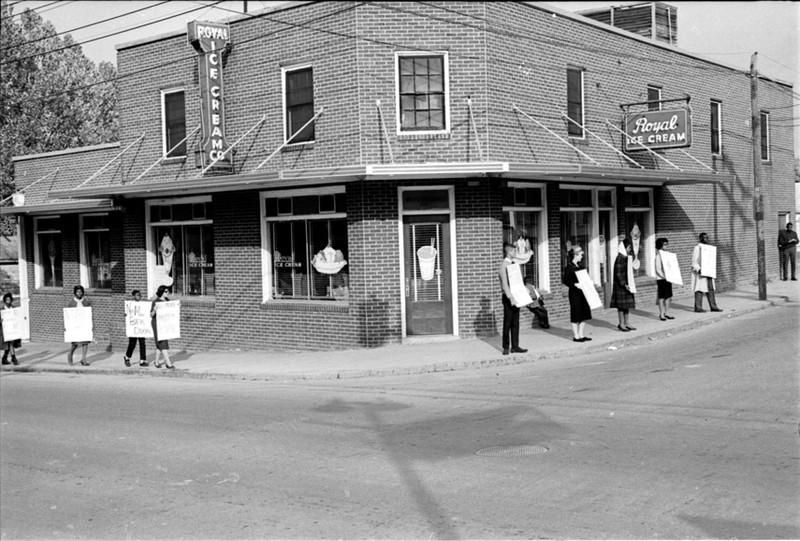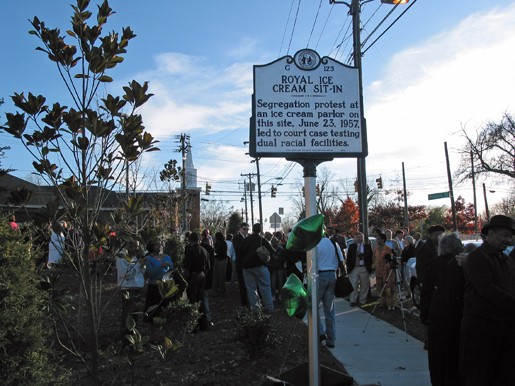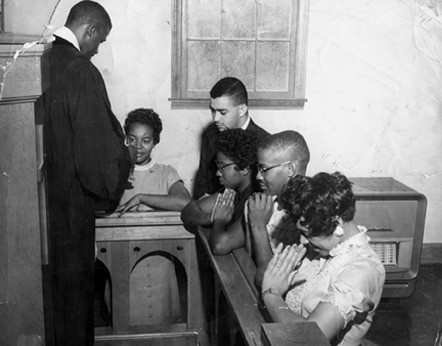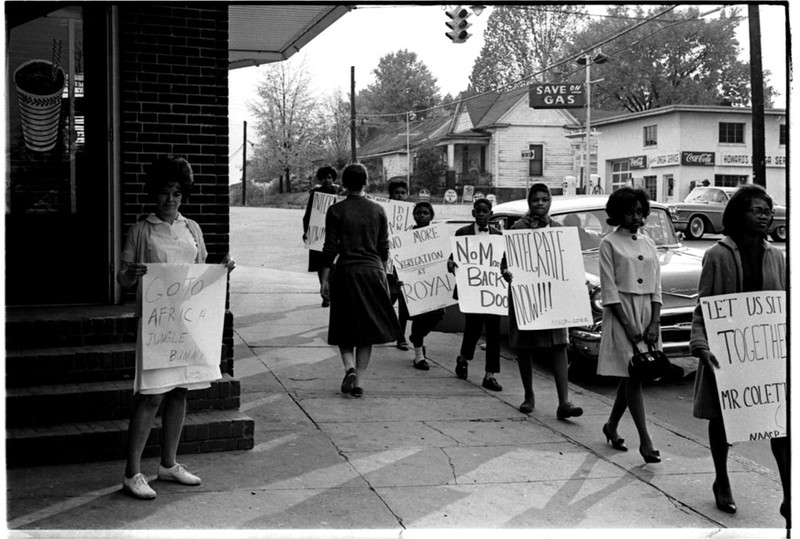Royal Ice Cream Sit-in Historical Marker
Introduction
Text-to-speech Audio
Images
Royal Ice Cream Parlor

Dedication ceremony for the unveiling of the Royal Ice Cream Sit-In, November 29th, 2009.

Five of the protesters praying, photo courtesy of Virginia Williams.

Protesters marching in front of parlor at a later protest in 1962. Photo from the Herald-Sun.

Backstory and Context
Text-to-speech Audio
Reverend Douglass E. Moore, who had long been involved with civil rights in the area, began talking to Martin Luther King Jr. Through these conversations, he was inspired to motivate the community to take action against racial segregation. He used his church as a way to organize people in non-violent protests, including the Royal Ice Cream Sit-in. This sit-in and this method of non-violent protest influenced a wave of other non-violent protests across the United States.
The sit-in at the Royal Ice Cream Parlor took place after church on Sunday, June 23, 1957. The sit-in included Reverend Douglass, along with Virginia Williams, Claude Glenn, Jesse W. Gray, Vivian Jones, Melvin Willis, and Mary Clyburn. Known today as the “Royal Seven” the six participants were all members of Reverend Douglass’s church. They sat in the white section of the restaurant in protest. They were refused service and were arrested for trespassing. This sit-in is significant because they appealed the case and it eventually went to the State Supreme Court.
The case was first appealed to the county court. The jury was all white, and they lost. It also lost in the State Supreme Court. The group tried to appeal their case to the United States Supreme Court, but they were refused. Although their case lost in both courts, it was still a win for the civil rights movement as it inspired similar protests across the country.
Cite This Entry
Marshall University et. al. "Royal Ice Cream Sit-in Historical Marker." Clio: Your Guide to History. March 16, 2017. Accessed July 28, 2025. https://theclio.com/entry/22242
Sources
Pharmboy, Abel. "Dedication of the 1957 Royal Ice Cream sit-in historical marker." Terra Sigillata. November 29, 2009. Accessed March 12, 2017. http://scienceblogs.com/terrasig/2009/11/29/dedication-of-1957-royal-ice-c/

